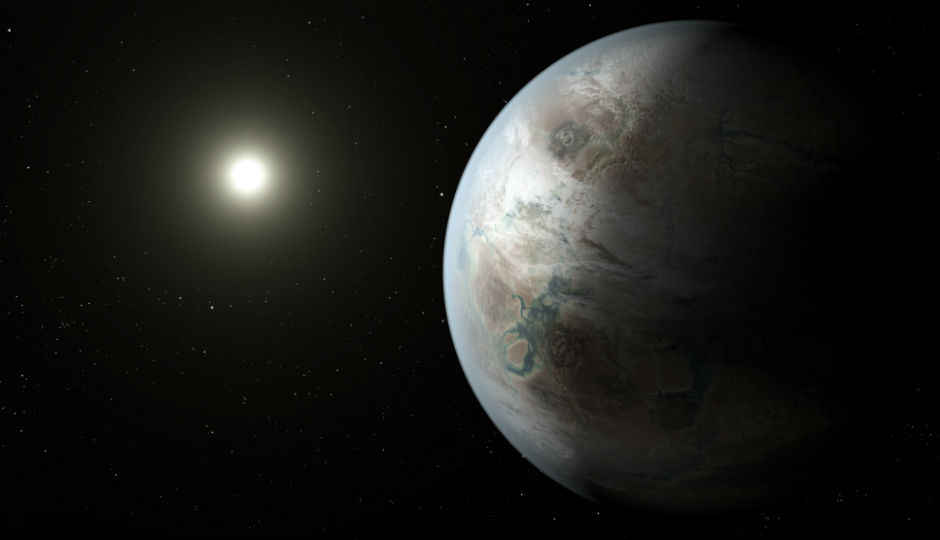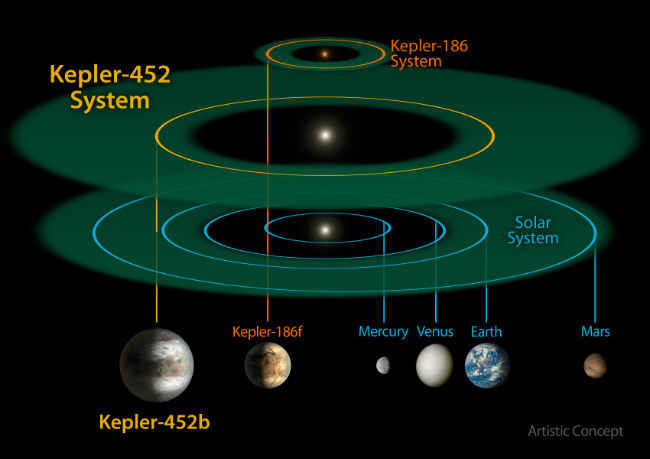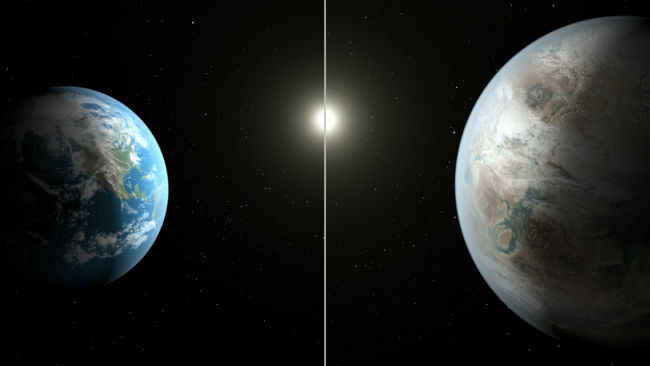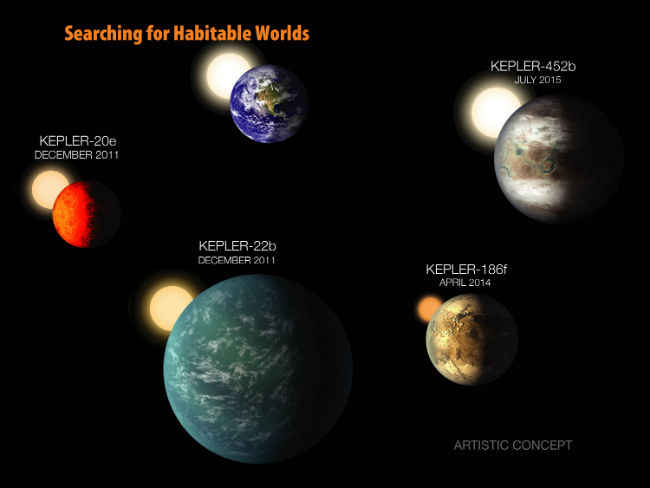Here’s what we know about Earth 2.0 so far

NASA's Kepler spacecraft has just found an exoplanet that is more similar to Earth than any other found before.
Scientists are calling it Earth 2.0, the ‘bigger, older cousin’ to our very own blue planet. According to NASA, Kepler 452b is an exoplanet that is the closest they’ve ever found to Earth itself. The planet resides in the habitable region around its star, Kepler 452, which means it is warm enough for liquid water to exist on it. NASA’s Kepler spacecraft has found the planet, but it is too far away to photograph. That said, there’s still a lot that modern technology has allowed us to know, and NASA scientists will continue detecting more in coming days. You’re probably curious to know why this is an important discovery, and if you’re not, you should be.
It’s just a little bigger than the Earth
The diameter of the Earth is 12,742 km, while Earth 2.0 or Kepler 452b is about 60% bigger at 20,000km.
The size and scale of Kepler 452b compared to Kepler 186f and some others. (Credit: NASA/JPL-CalTech/R. Hurt)
Gravity is stronger there
The larger size of the planet means that the gravitational force on it is more. Actually, the gravitational force is estimated to be approximately twice as that on Earth. That said, scientists have also said that the human body could adapt to it over time. The first few people there would have a tough time adjusting though, and they could eventually turn into Super Sayians, just like Goku did in Dragonball Z, after training in the gravity chamber.
The years are longer on Kepler 452b
But they’re not that much longer. Kepler 452b takes only 20 days more than the Earth, to orbit its Sun, which means that a year on the planet is 385 days long, a striking similarity with the Earth. This is a significant similarity. Planets in our solar system, for example, Jupiter, takes about 12 Earth years to orbit the Sun once. Neptune takes 185 days, while Venus takes less than 100 days.
Earth 2.0 may actually be Earth 1.0
Kepler 452, the star for Earth 2.0 is 1.5 billion years older than Earth’s Sun. The planet has existed in the star’s habitable region for billions of years. According to NASA, the planet could be capable of supporting life, or may even have had life on it, at some point in its history.
This artist's concept compares Earth (left) to the new planet, called Kepler-452b, which is about 60 percent larger in diameter. (Credit: NASA/JPL-CalTech/R. Hurt)
Water, water, everywhere
Well that’s not quite accurate. According to NASA’s estimation though, Kepler 452b could be at the right temperature for liquid water to exist on it. You know, that thing that keeps all of us alive?
Also, scientists have said that the planet could be rocky, meaning there could be active volcanoes on it.
Plants should be able to thrive there
The planet’s star is not only older than the sun, but also slightly brighter. This would aid plants in thriving on the planet, assuming of course that it is a rocky planet as well. This in turn allows humans to survive, since photosynthesis by plants is what creates the air that we breathe. If you find yourself there though, keep your sun block ready.
Habitable planets found by NASA's Kepler mission in the last six years. (Credit: NASA Ames/W. Stenzel)
You can’t get there
While many reports seem to suggest that the planet is poised to take over from the Earth we currently live in, there’s currently no way to get there. It is 1400 lightyears away, and one lightyear is the distance travelled by light in one year. Light travels at 670 million miles per hour, you do the math.
Hey, don’t worry, hopefully someone will design a spacecraft that can carry humans and travel at such speeds someday. Read Erich Von Daniken's Chariot's of the Gods to know more about such a spacecraft. Currently, the fastest spacecraft to leave the Earth was New Horizons, which just passed Pluto. New Horizons left at a speed of about 37,500 miles per hour. So, until the discovery is made,
Note: The images of Kepler 452b in the story aren't originals. They are artist's representations taken from NASA. Kepler 452b is too far to be photographed. You can get more information about Kepler 452b here.












